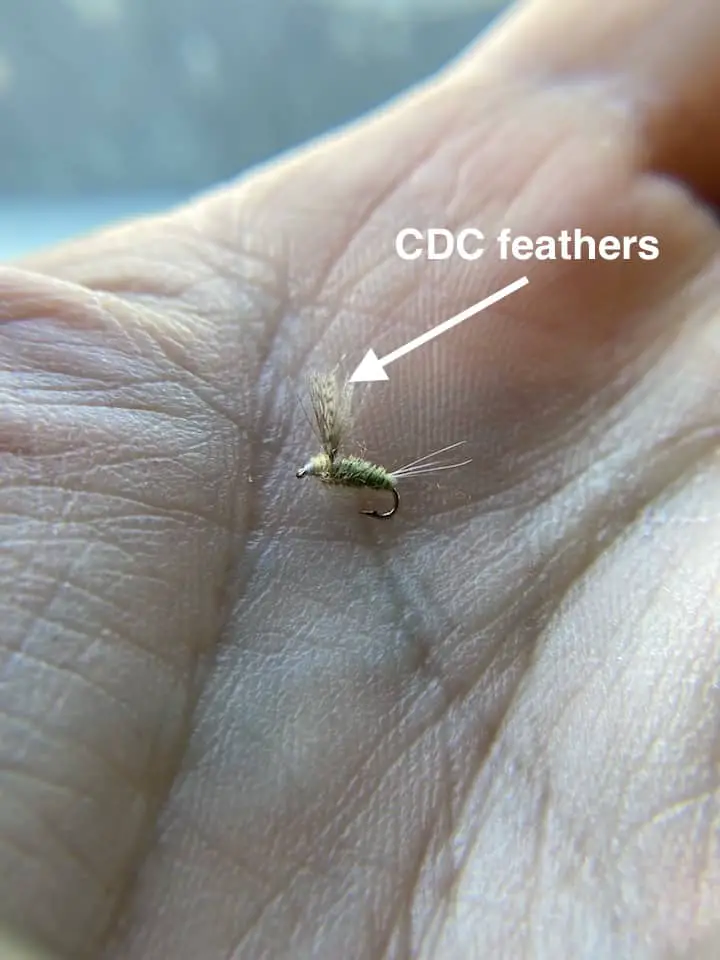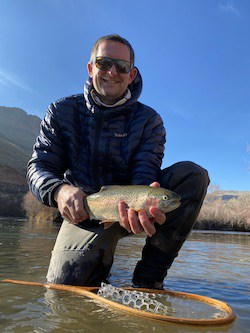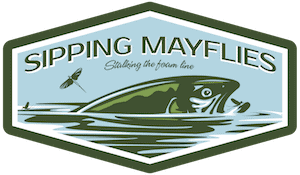What is CDC in fly fishing?
What are CDC flies?
Feb. 2nd, 2022
If you’re a fly angler and are wondering what CDC is, you’ve come to the right place. CDC is a very special type of feather that fly tyers use when their goal is super buoyancy.
In the below article, I’ll explain to you what CDC stands for, where it’s found, and how it can (if used correctly) make your fly pattern vastly more effective.
There’s also one vital rule you need to follow when using CDC flies. If violated, it’ll not only obliterate the advantages CDC offers, but it’ll sink your fly.
Let’s dive in.
What is CDC in Fly Fishing?
CDC, which stands for “cul de canard,” is a very unique type of duck feather that is commonly used in the tying of dry flies. Cul de canard is a french phrase meaning “duck bottom” or “rear of the duck.” CDC feathers are naturally fluffy and come in all colors including black, brown, green, olive, and yellow.
Here’s a picture of a CDC fly pattern that I used to land several brown trout on a recent outing in January.

Where do CDC feathers come from?
CDC feathers come from ducks, but more specifically, they come from the back-end of a duck near the preen gland. The preen gland, also called the uropygial gland, produces an oil that coats the duck’s feathers. This coating of oil makes the duck’s feathers very water resistant and thus buoyant.
The oil itself eventually spreads over the entire duck, but the CDC feathers are the most saturated because they’re nearest to the gland. The average duck will yield around 90 CDC feathers.
Duck feathers (including CDC feathers) are also able to trap air due to their unique design. This not only helps the duck float more easily, but it helps insulate the duck’s body heat.
CDC feathers are very commonly available for anyone who wants to tie fly patterns.
What are cdc flies?
A fly pattern can be called “CDC” if it contains any amount of CDC feather when it’s tied. The fly doesn’t have to be entirely constructed of CDC feathers. In fact, I don’t think I’ve ever seen a fly that was only tied with CDC.
The reason it’s important to note if a fly contains CDC is because of the way CDC flies must be treated. I’ll explain this in more detail below.
Generally speaking, CDC is used in tying dry flies, because you want dry flies to float as long as possible. But, some folks tie nymphs with the feathers as well, mainly on the hackle. The CDC isn’t used to help float nymphs, it’s for the appearance of movement.
You might think that CDC flies must more expensive due to their fantastic fishing qualities, but they’re not. In fact, they’re quite common.
Are CDC flies better?
CDC flies aren’t necessarily better than other dry flies, but they certainly have advantages in certain situations such as dry fly fishing. Whenever you want your fly to float as well as possible, CDC fly patterns are usually going to be your best choice.
While CDC flies are buoyant and naturally water resistant, their floating ability won’t help you if you’re tossing streamers, swinging wet flies, or drifting nymphs.
So, next I’m going to cover the rule about fly fishing with CDC flies. It’s important, so don’t miss it.
But first, here’s a quick video of a nice brown trout I caught using a CDC BWO fly pattern. In all, I caught five browns in this spot using the same fly, over the course of 40 minutes or so.
I was standing downstream of the rising fish, quartering my casts up ahead of them.
The Vital CDC Fly Rule
Ok, you made it to the end of the article, and you now get to learn the rule that’ll make or break your CDC fly fishing experience.
Here it is.
Don’t ever use regular floatant on CDC feathers.
Why?
Because regular floatant will actually sink a fly tied with CDC feathers. It destroys the natural characteristics of feathers.
There’s only one floatant that I’ve ever successfully used with CDC flies and it’s called Lochsa by Loon Outdoors.
Keep in mind, you can still put regular floatant on the parts of the dry fly that aren’t CDC. Just avoid the CDC feathers wherever they are on the fly.
While we’re on the subject, check out another article I wrote on greasing your leaders; something that’s very important in fly fishing.
Summary
Ok, so you now know what CDC means in fly fishing circles, and where it comes from (a duck’s rear). You’ve also learned what a CDC fly pattern is, and what not to do to it (regular floatant).
So, now I’d recommend you get a few CDC flies and do some experimenting. Compare the performance of your CDC and non-CDC dry flies. Test how long it takes for your CDC flies to sink, and then compare it against the time it takes for your standard non-CDC flies to sink.
Every fly angler has a preference. Some use it, some don’t.

About the Author
My name's Sam and I'm a fly fishing enthusiast just like you. I get out onto the water 80+ times each year, whether it's blazing hot or snow is falling. I enjoy chasing everything from brown trout to snook, and exploring new waters is something I savor. My goal is to discover something new each time I hit the water. Along those lines, I record everything I learn in my fly fishing journal so I can share it with you.
Follow me on Instagram , YouTube, and Facebook to see pictures and videos of my catches and other fishing adventures!


